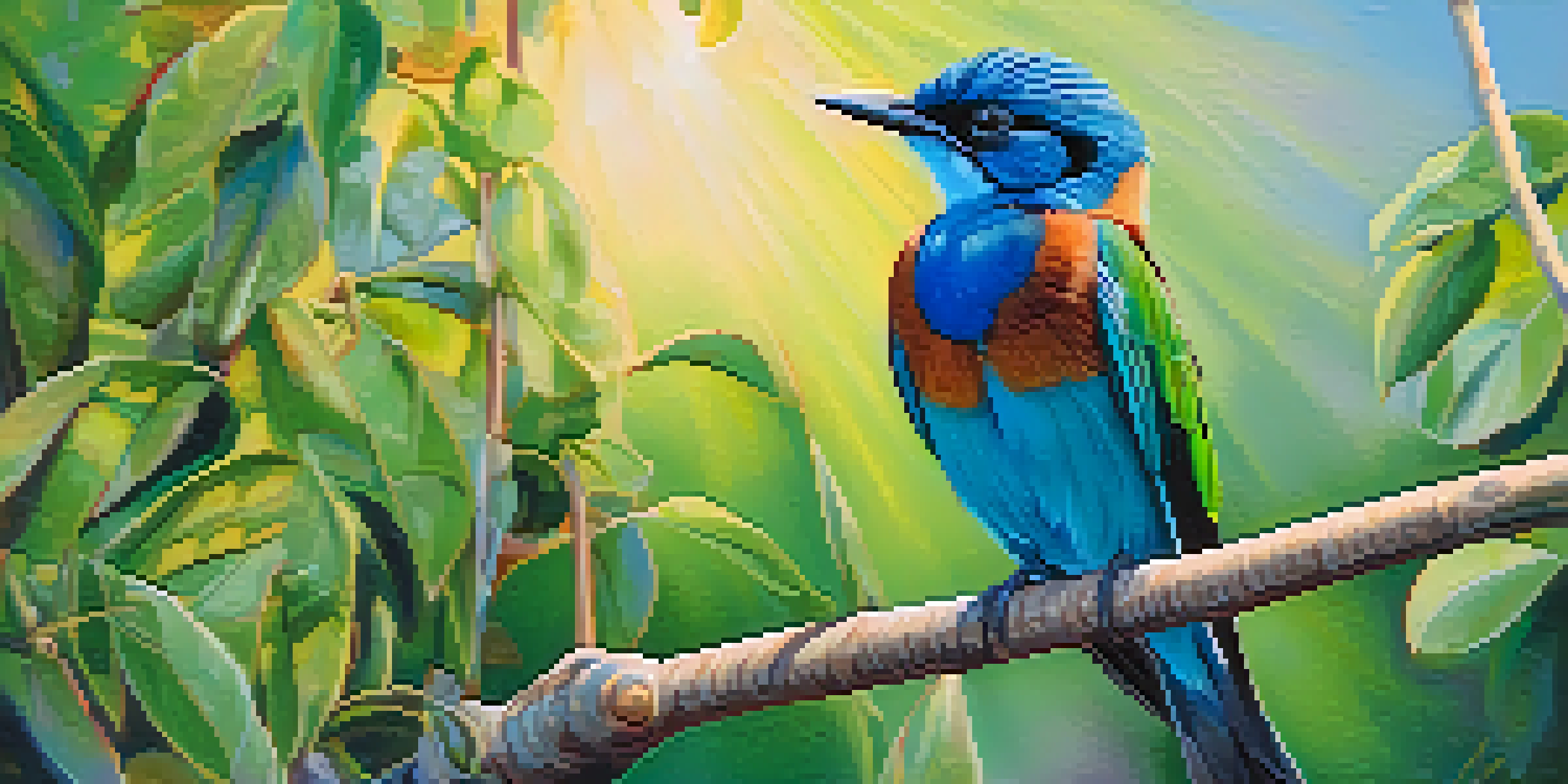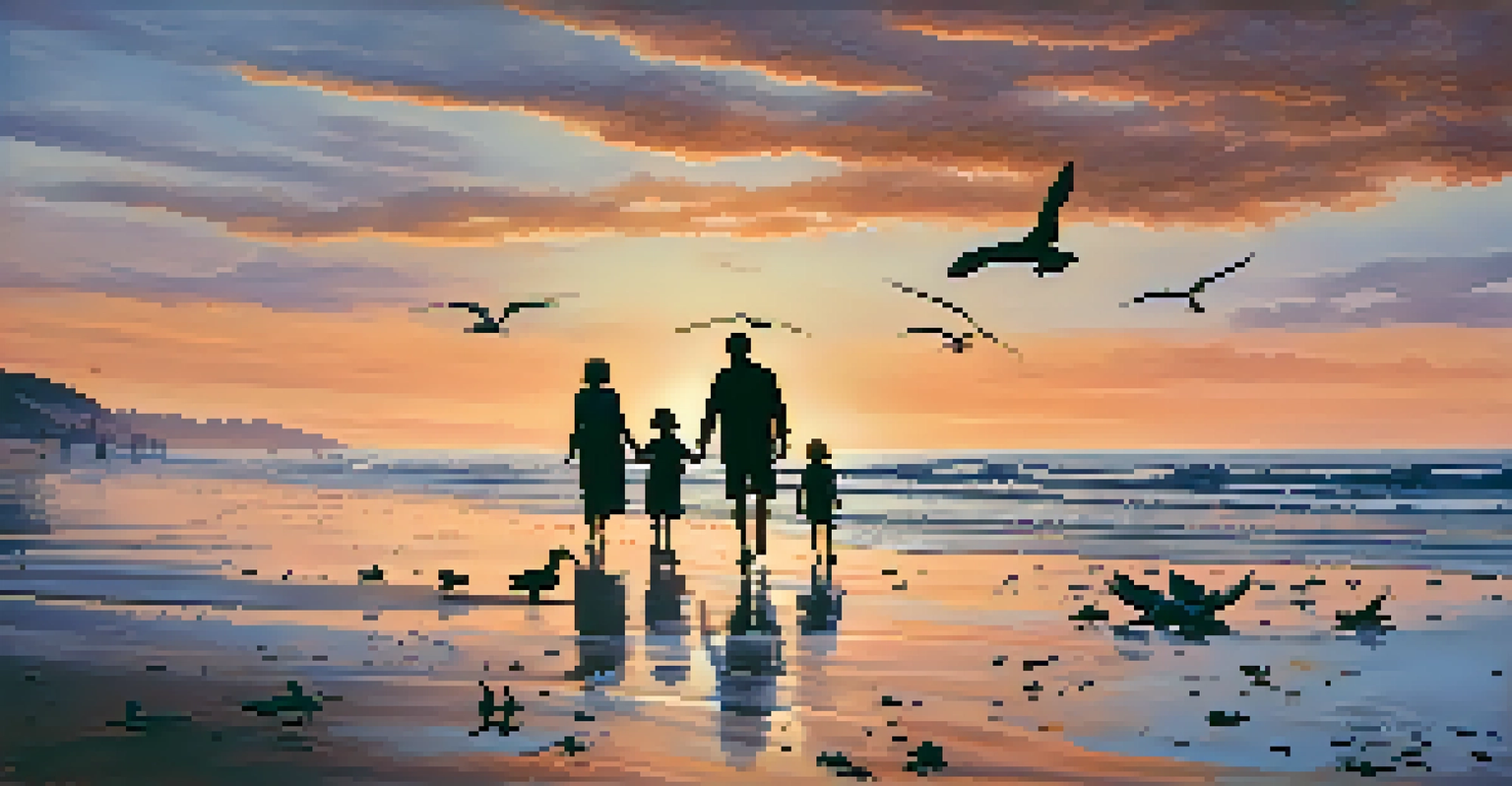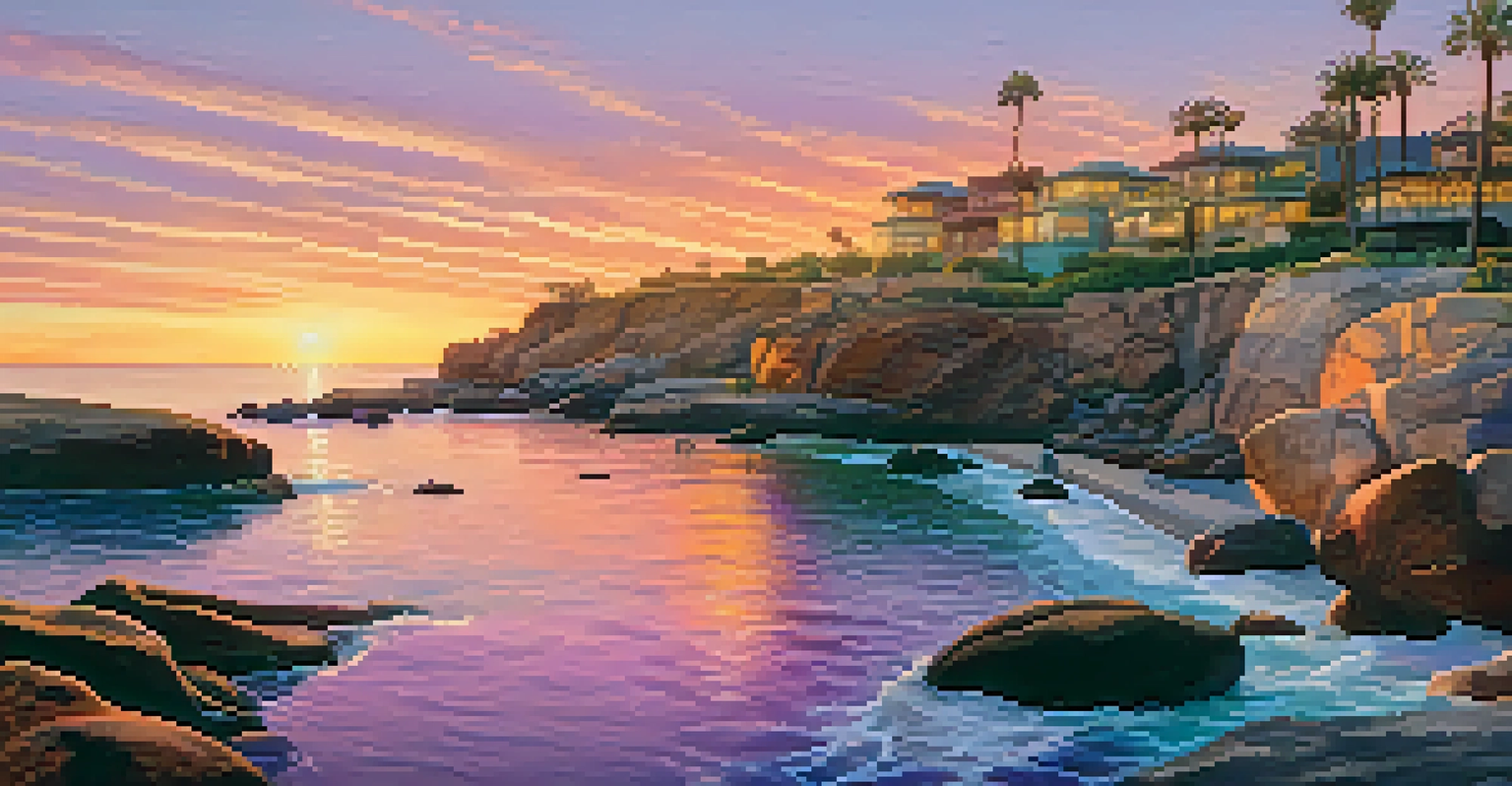The Ultimate Guide to San Diego's Wildlife Photography

Why San Diego is a Wildlife Photographer's Paradise
San Diego is a haven for wildlife enthusiasts, thanks to its diverse ecosystems. From coastal beaches to lush parks and deserts, the region offers numerous habitats where various species thrive. This diversity not only makes for stunning backdrops but also provides unique photography opportunities. Whether you're capturing birds on the cliffs or marine life in tide pools, the possibilities are endless.
In every walk with nature one receives far more than he seeks.
The mild climate in San Diego allows for year-round photography, making it easy to explore different areas in any season. Wildlife is often more active during the early morning or late afternoon, which means photographers can enjoy pleasant temperatures while chasing the perfect shot. With each season, you'll discover different migratory patterns and behaviors of local animals, keeping your photography fresh and exciting.
In addition to its natural beauty, San Diego's wildlife is relatively accessible, with many family-friendly locations to explore. Whether you're a seasoned pro or a beginner, you can find spots that cater to your skill level. With the right planning and a sense of adventure, San Diego can become your go-to destination for wildlife photography.
Essential Gear for Wildlife Photography in San Diego
Having the right gear is crucial for capturing stunning wildlife images. A quality camera with a fast autofocus system and interchangeable lenses will give you the flexibility to shoot in various conditions. For wildlife, a telephoto lens (like a 70-200mm or 300mm) is especially valuable, allowing you to get close-up shots without disturbing the animals. A sturdy tripod can also help stabilize your shots for clearer images.

Don’t forget to bring extra batteries and memory cards, as wildlife photography can be unpredictable. You might find yourself waiting for hours to capture that perfect moment, and the last thing you want is to run out of power or storage. Additionally, consider packing a weather-sealed camera bag to protect your equipment from sudden changes in weather, especially near the coast.
San Diego's Diverse Wildlife Habitats
San Diego offers a variety of ecosystems, from beaches to deserts, providing wildlife photographers with abundant subjects and stunning backdrops.
Lastly, a good pair of binoculars can enhance your experience by helping you spot animals from a distance. This can be particularly useful in places like Anza-Borrego Desert State Park, where wildlife might be more elusive. With the right gear in hand, you'll be ready for anything San Diego's wildlife has to offer.
Top Locations for Wildlife Photography in San Diego
San Diego boasts a variety of locations perfect for wildlife photography. One standout spot is the San Diego Zoo Safari Park, where you can capture images of exotic animals in natural habitats. With vast open spaces and diverse wildlife, you'll have numerous opportunities for stunning shots, whether you're photographing lions or exotic birds.
Photography is the story I fail to put into words.
Another fantastic location is La Jolla Cove, known for its picturesque views and abundant marine life. Here, you can photograph sea lions basking on the rocks or capture the vibrant colors of tropical fish while snorkeling. The tide pools at low tide also offer a treasure trove of unique subjects, from sea stars to small crabs.
If you're looking for birdwatching opportunities, the Tijuana Estuary is a must-visit. This wetland area is home to hundreds of bird species, making it a prime spot for photographers. With various trails to explore, you can easily find a perfect vantage point to observe and photograph these beautiful creatures in their natural habitat.
Understanding Wildlife Behavior for Better Shots
To capture compelling wildlife photographs, understanding animal behavior is key. Knowing when animals are most active can help you plan your outings for optimal shooting conditions. For instance, many birds are most active during dawn and dusk, making these times ideal for capturing stunning images in soft, golden light.
Patience is also essential in wildlife photography. Animals often take their time to feel comfortable in their surroundings, so sitting quietly and observing can lead to incredible moments. Once you notice an animal's behavior, you can anticipate its movements and be ready to snap that perfect shot when the moment arises.
Essential Gear for Wildlife Photography
A quality camera, telephoto lens, and extra supplies are crucial for capturing stunning wildlife images in San Diego's diverse settings.
Additionally, consider the importance of composition in your shots. Using techniques such as the rule of thirds or framing can help create visually appealing images. By combining your knowledge of wildlife behavior with strong composition, you'll elevate your photography skills and create stunning images.
Tips for Capturing Stunning Wildlife Photos
When photographing wildlife, there are a few key tips that can enhance your results. First, aim for a shallow depth of field to create a nice bokeh effect, which helps to isolate your subject from the background. This technique brings attention to the animal and can make your images more impactful.
Another important tip is to focus on the eyes of your subject. Sharp, clear eyes can bring your photos to life, creating a connection with viewers. If possible, try to position yourself at eye level with the animal, as this often leads to more engaging and intimate portraits.
Lastly, experiment with different angles and perspectives. Rather than sticking to the standard eye-level shot, try crouching down or shooting from above to find unique compositions. These creative approaches can help your work stand out and showcase the beauty of wildlife in a fresh and interesting way.
Post-Processing Tips for Wildlife Photography
Once you've captured your stunning wildlife images, post-processing can take them to the next level. Start with basic adjustments like exposure, contrast, and color correction to ensure your photos reflect the vibrant scenes you encountered. Programs like Adobe Lightroom or Photoshop are popular choices that offer a range of tools for enhancing your images.
Don't be afraid to crop your photos to improve composition or draw the viewer's eye to the subject. This can be particularly useful if you weren't able to achieve the perfect framing in-camera. Just remember to maintain the aspect ratio to avoid distortion.
Ethical Wildlife Photography Practices
Respecting wildlife and their habitats is vital for ethical photography, ensuring that animals remain undisturbed while capturing their natural behaviors.
Lastly, consider applying a subtle sharpening effect to enhance details, especially around the eyes of your subjects. But be careful not to overdo it, as this can lead to unnatural-looking images. With thoughtful post-processing, you can transform your wildlife photos into breathtaking works of art.
Conservation and Ethical Photography Practices
As wildlife photographers, it's essential to prioritize conservation and ethical practices while capturing images. Always respect the animals and their habitats by maintaining a safe and appropriate distance. Getting too close can stress animals and disrupt their natural behaviors, which is the opposite of what we want to achieve in our photography.
Educating yourself about the local wildlife and ecosystems can help you understand the impact of your actions. By knowing which areas are sensitive or protected, you can plan your shoots accordingly and minimize your footprint. Supporting conservation efforts and participating in local wildlife programs can also enhance your connection to the environment.

Finally, consider sharing your experiences and knowledge with others. By promoting responsible wildlife photography, you contribute to a community that values the beauty of nature while protecting it. Together, we can ensure that future generations can enjoy and photograph the incredible wildlife that San Diego has to offer.